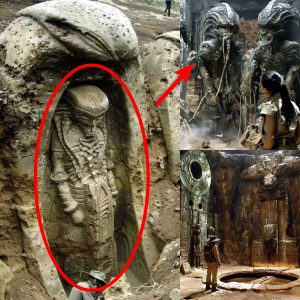Archaeologists excavating the Cajamarquilla archaeological site in Peru have uncovered a fascinating and mysterious mummy estimated to be between 1,200 and 800 years old. The mummy, found in an underground tomb 16 miles from Lima, was fully bound in ropes with its hands covering its face, a characteristic feature of the local funeral practices of the time.

The excavation team, led by Professor Pieter Van Dalen Luna of California State University San Marcos, discovered the mummy along with various funerary offerings, including stone tools, ceramic pots containing traces of vegetable matter, and the remains of a dog and a guinea pig. Additionally, mollusk shells and llama bones were found near the tomb’s entrance, suggesting that the site was visited by mourners who brought food offerings.

The mummy, believed to be a young man aged between 18 and 22, was found lying partially on his side against a pile of rocks and the wall of the burial chamber. The discovery at Cajamarquilla highlights the area’s historical significance as a multi-ethnic hub of pre-Incan civilization, which thrived along the Peruvian coast and mountains before the rise of the Inca Empire. The exact chronology of the mummy will be further clarified through radiocarbon dating.

Peru is renowned for its rich archaeological heritage, with numerous sites reflecting the diverse cultures that developed both before and after the Incan Empire. The Inca civilization, which emerged in the early 13th century in the Peruvian highlands, eventually extended its influence across southern Ecuador, Colombia, and central Chile before falling to Spanish conquistadors in the 16th century.
My name is Emily Tran, and I am a proud contributor at ArtifactInsights. With a deep passion for cultural heritage and historical artifacts, I dedicate my writing to explore and illuminate the fascinating stories behind ancient treasures and modern discoveries. Join me on a journey through time at ArtifactInsights, where history comes alive through each article.





